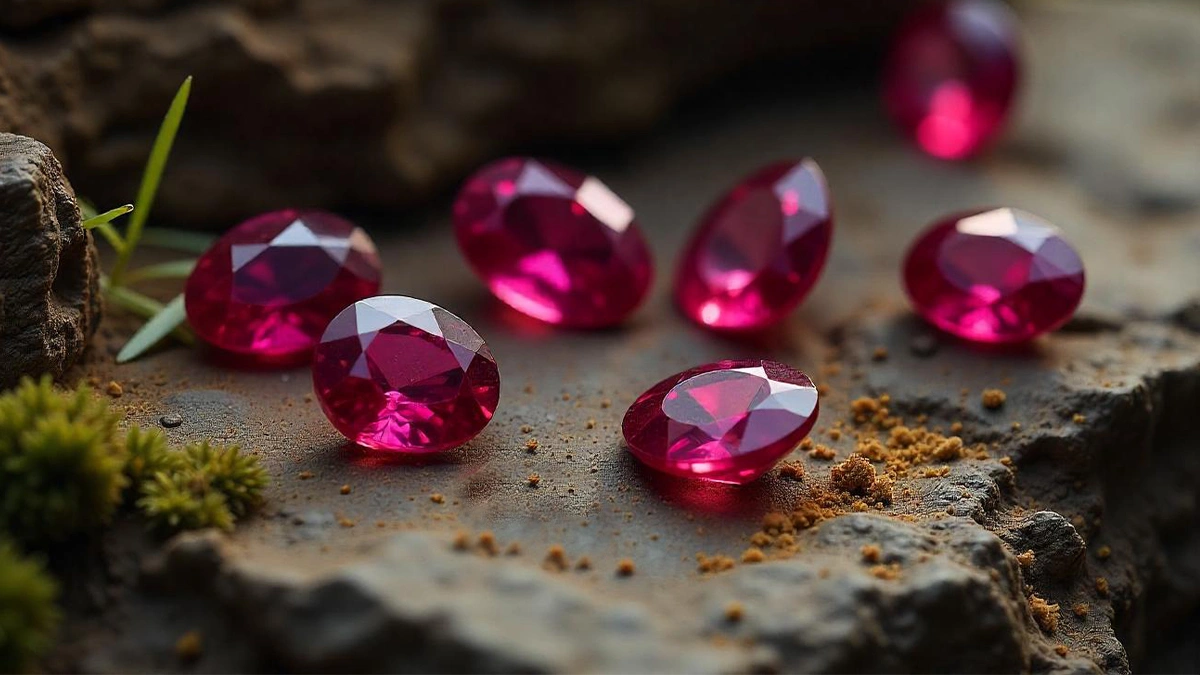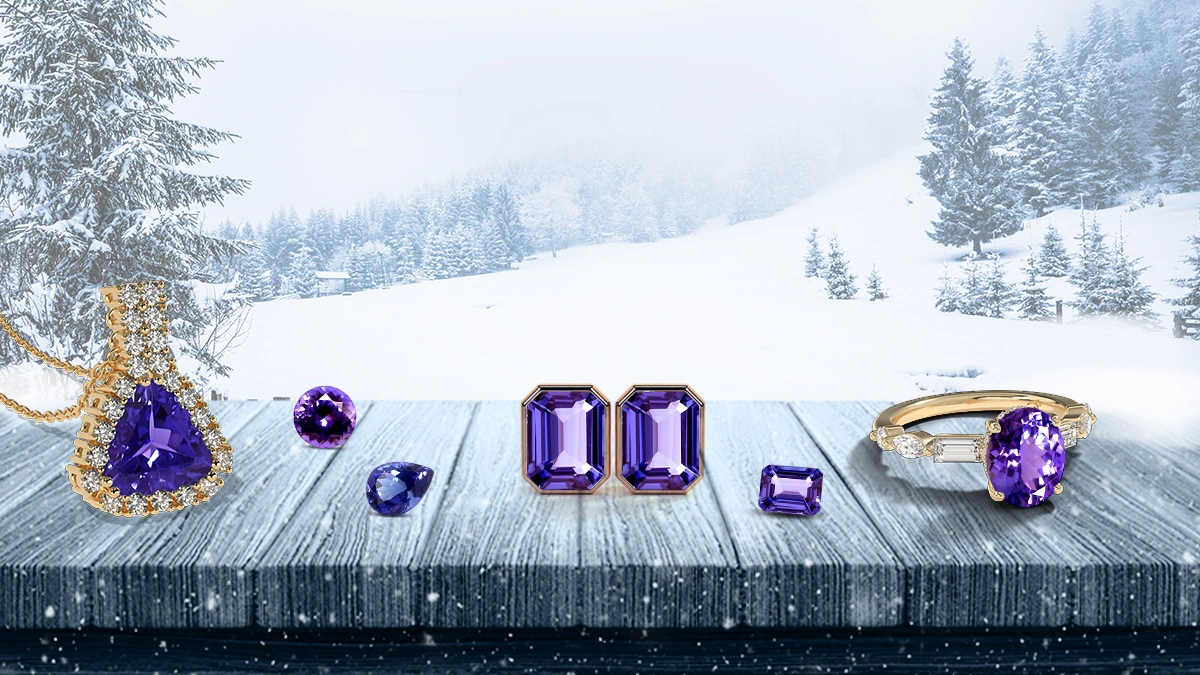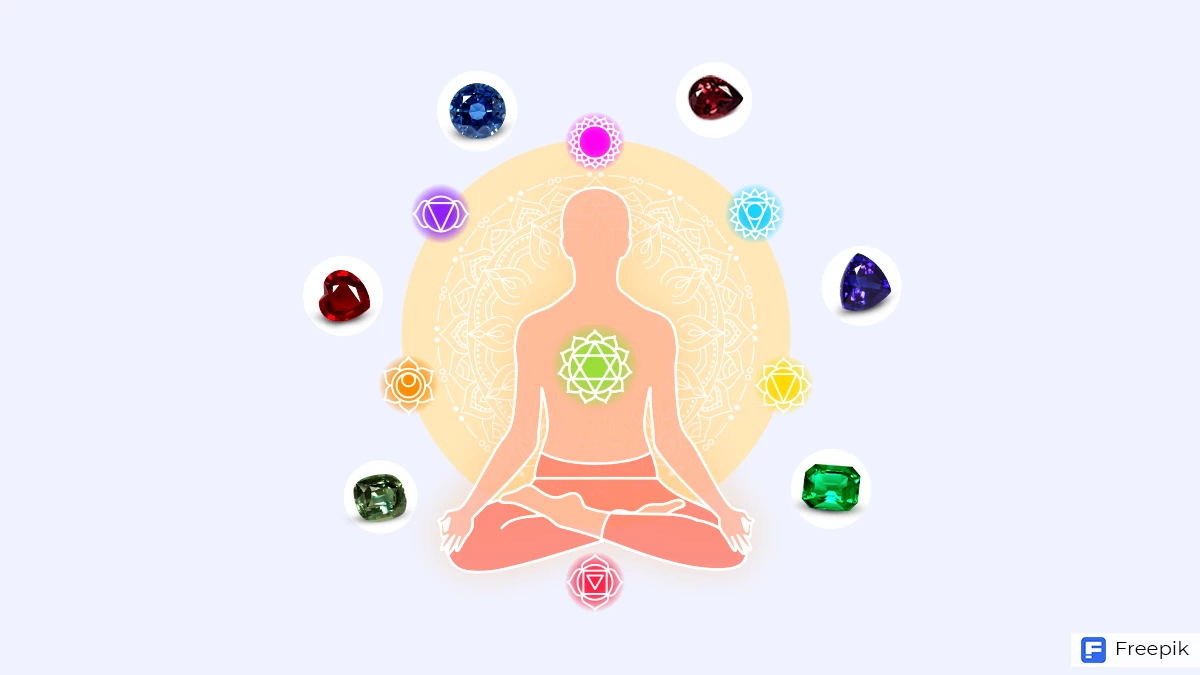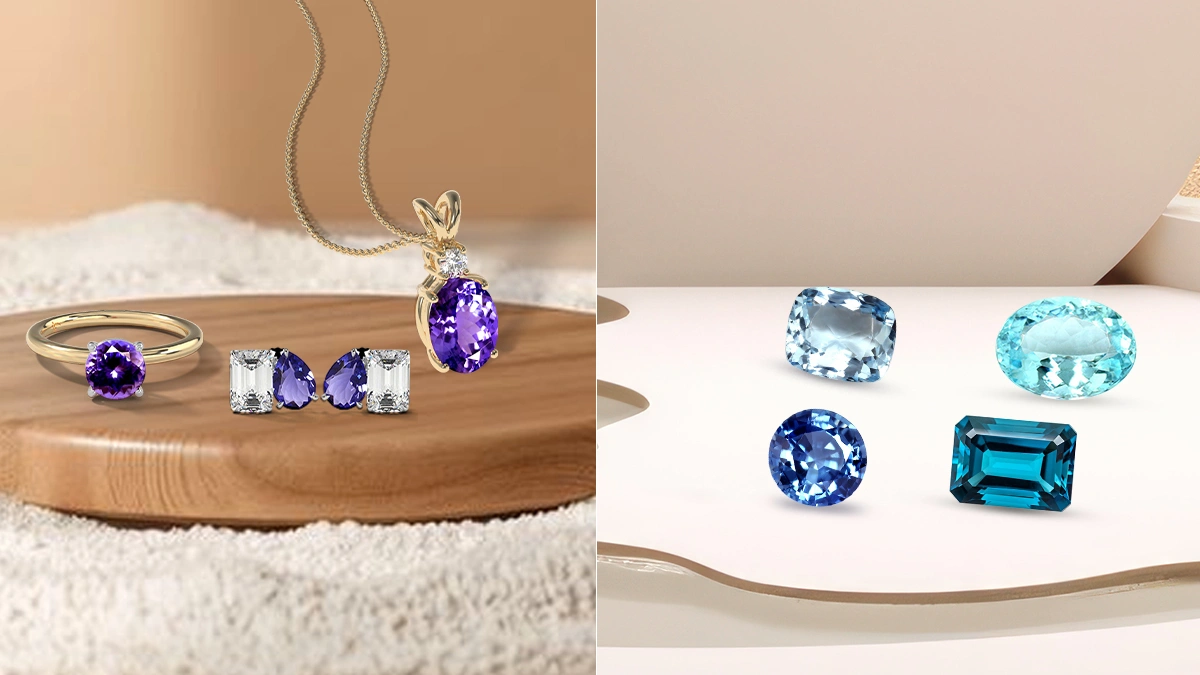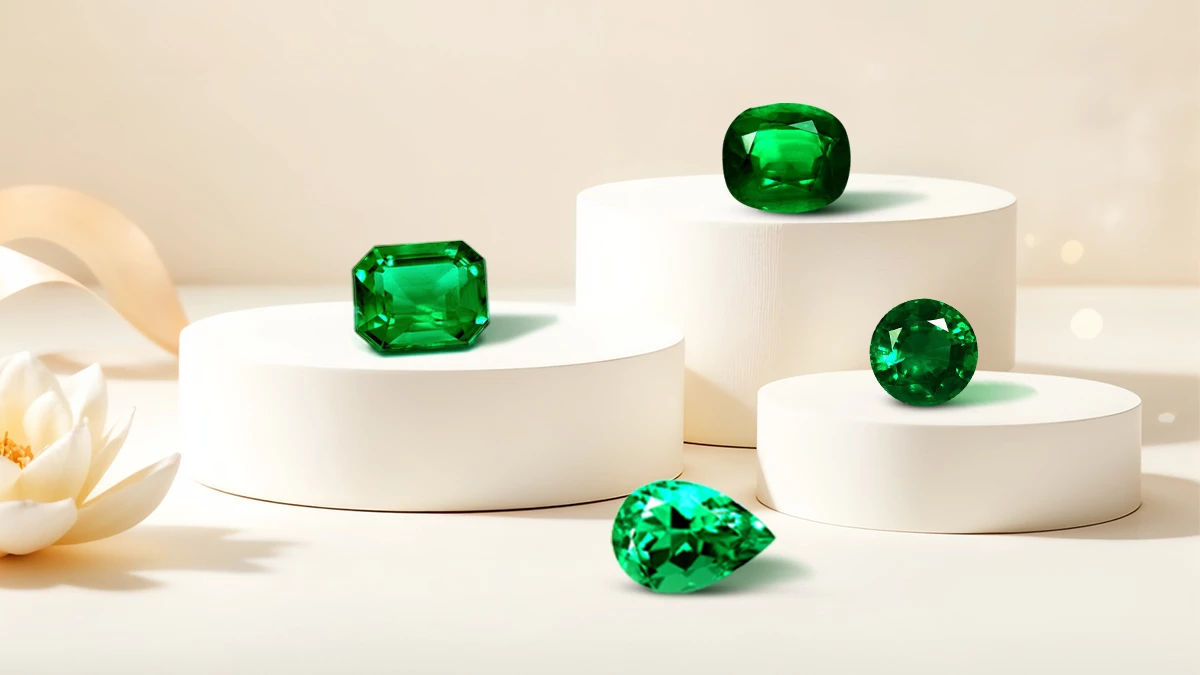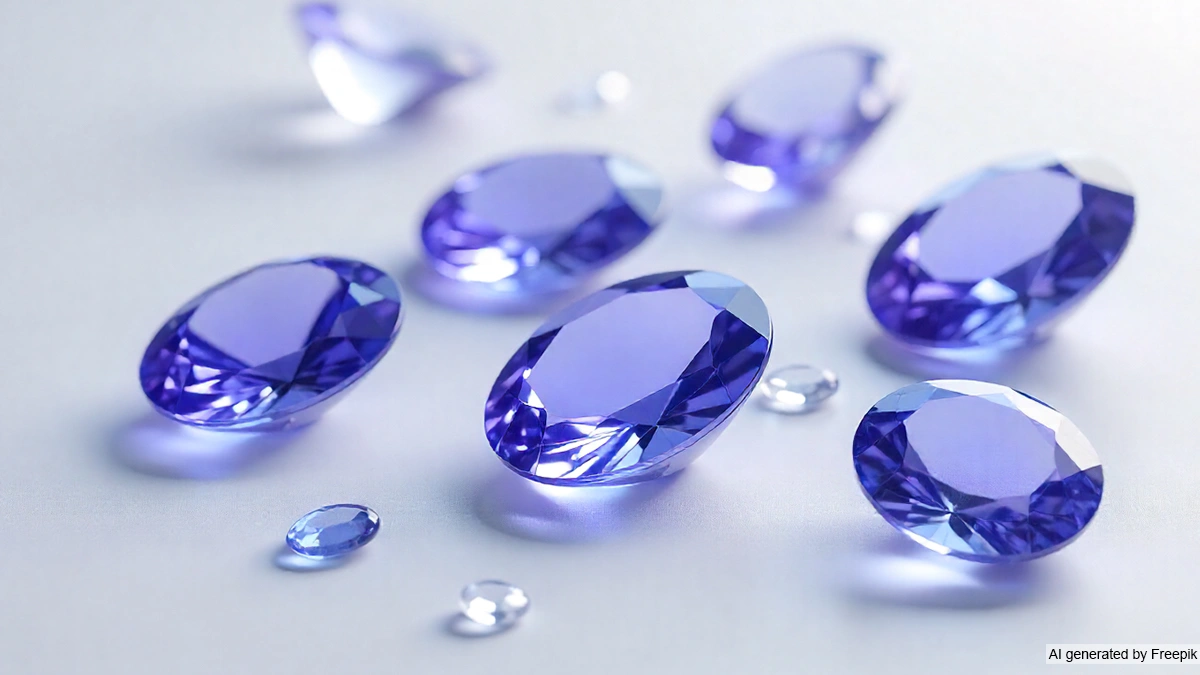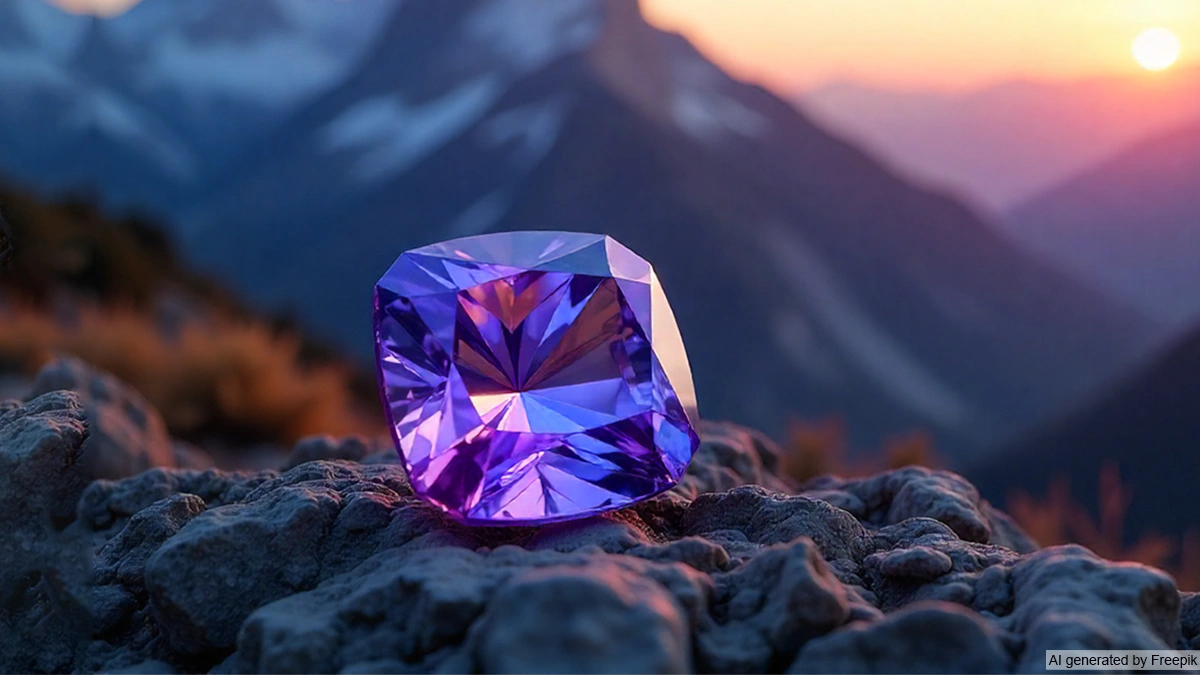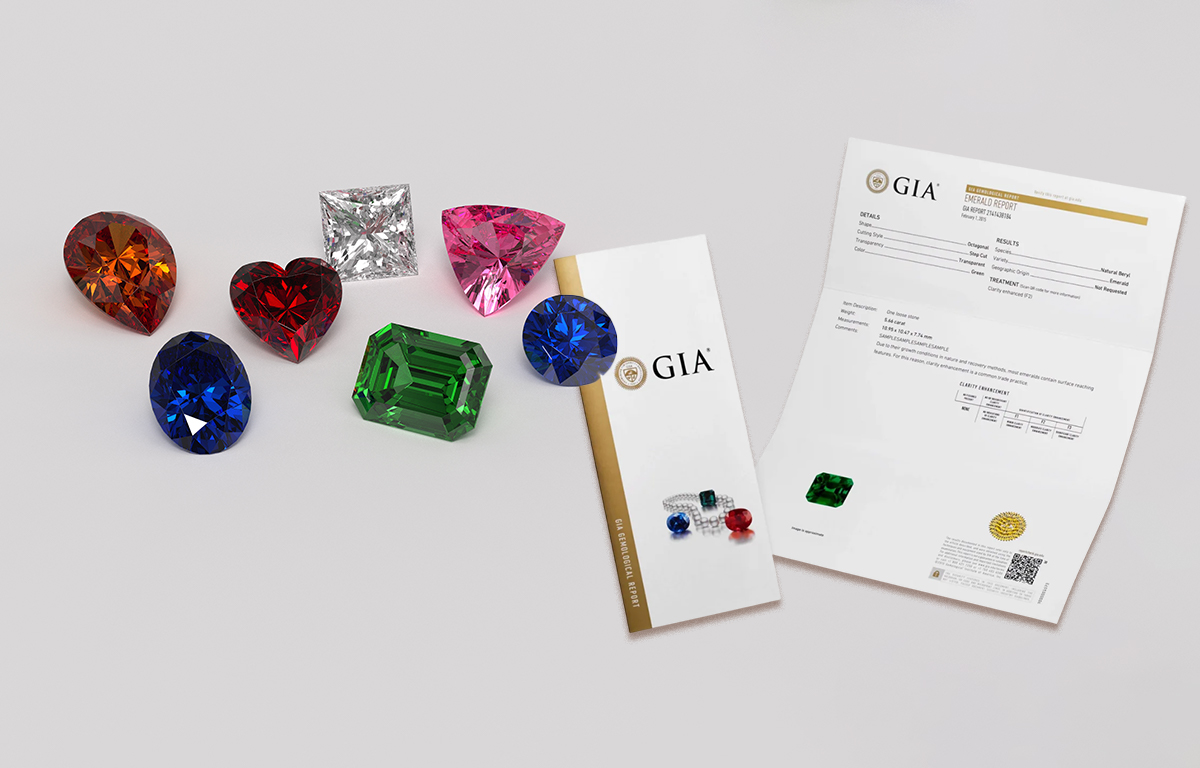The alluring rubies have captivated human hearts for centuries. Their deep red color, symbolic significance, and interesting history make them one of the most precious gemstones on the planet. These charming ruby stones possess a wonderful aura and spiritual power. If you have been fascinated by their beauty, you’re in the right place.
Learn about the significance, history, unique characteristics and everything you need to know about rubies in this post.
Understanding Ruby Stones
The word ruby is derived from the Latin ruber, meaning red.
This precious gemstone is a variety of the mineral corundum, a crystalline form of aluminum oxide. It contains trace elements like iron, titanium, vanadium or chromium. On its own, pure corundum is naturally transparent. However, this transparency exhibits various colors when these trace elements are present.
Chromium imparts corundum with its red color and forms what is commonly known as a ruby. Ruby stones symbolize love, passion and nobility. Also, they are the ‘July birthstone’ and are suitable for gifting on the 15th and 40th milestone anniversaries.
Additionally, rubies serve as protective stones that can bring peace, happiness and passion into the life of the wearer. Moreover, rubies promote self-care and provide confidence to face all challenges in life with positive energy.
The History of Rubies
Rubies are one of the most admired and historically significant colored gemstones.
The Bible mentions ruby four times, linking them to qualities like beauty and wisdom. It stands as one of the twelve precious stones created by God, known for its enduring beauty and value.
Consequently, Ruby maintained its significance with the birth of the western world. It became one of the most desired gems of European royalty and the elite. Furthermore, many medieval Europeans wore rubies to ensure health, wealth, wisdom, and success in love.
The Mogok Valley in upper Myanmar (Burma) was for centuries the world’s main source for rubies. Warriors carried them to be unconquerable in battle.

In Sanskrit, an ancient Indian language, a ruby gemstone has the name ‘Ratnaraj’, or the King of the jewels. People appreciated ruby stones highly, making them the preferred gemstone of the upper class and Indian royalty.
Historical evidence indicates that rubies were traded along the Silk route in China as early as 200 B.C. Chinese warriors embellished their swords with rubies for protection. Also, the Chinese believed that red is a symbol of good fortune and hence, rubies became their favorite gem.
In the first century AD, an ancient Roman scholar and historian, C. Pliny Secundi wrote extensively about rubies in his book, “Natural History.” He praised the ruby for its remarkable hardness and described its color as a “gentle fire,” highlighting a unique luster that made the gemstone more distinctive.
Lab-Grown Rubies V/S Natural Rubies
Like diamonds, rubies can also be produced in a laboratory.
Natural ruby stones are formed under the Earth’s crust over a period of millions of years! On the other hand, lab-created rubies are produced in a controlled setting in a laboratory.
Lab-created rubies are more affordable than natural rubies. They are also more likely to be made without the imperfections that exist in natural rubies. Chemically, a lab-created ruby is the same mineral as a natural one, having the same chemical composition as a natural stone.
The choice of the appearance of the ruby is subjective. Both natural and lab-created rubies seem to be beautiful. Eventually, one’s choice depends on one’s budget and preferences.
4 Cs of Ruby Stones
Grading a ruby involves various factors, each contributing to the overall quality and desirability of the gemstone. These factors include color, clarity, cut and carat weight, commonly known as the “Four Cs” of gemstone grading. Let’s discuss each of these elements in detail.
Color
One of the most important characteristics of rubies is their striking red color. The finest rubies exhibit a pure, vibrant red to slightly purplish-red color.
This is often called “pigeon blood” red and such stones hold excellent value. When assessing color, consider the hue, tone and saturation.
- Hue refers to the actual primary color of rubies. It can either be red, pink, or somewhere in between.
- Tone refers to the depth of the color. It could be dark, light, or in the middle.
- Saturation refers to the intensity and purity of color across the stone. Highly saturated rubies with vibrant red color are the most valuable.
Clarity
Clarity is the occurrence of inclusions or flaws in the ruby. Although certain inclusions are permissible, they must not affect the beauty of the ruby.
Rubies without any visible inclusions are extremely rare and pricey. Also, a ruby with maximum inclusions will seem dull and lifeless, whereas one with minimum inclusions exhibits sparkle and charm.
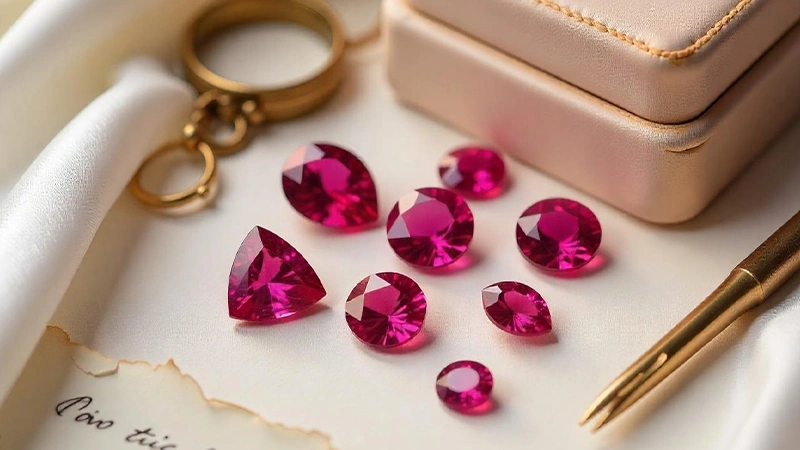
Cut
The cut of a ruby impacts its brilliance and overall appearance and will display the best possible color and light reflection. Common cuts for rubies are oval, cushion and round, but you may also find unique shapes like heart or marquise cuts.
When assessing a cut, look for a ruby that has a balanced shape, symmetrical facets and no visible window (a pale area where light travels through).
Carat
Carat weight determines the size of the ruby. Larger rubies are rare and more expensive. Still, size should not be the only consideration.
A smaller ruby with exceptional color and clarity can be more valuable than a larger ruby with poor color and many inclusions.
How To Identify the Real Ruby Stones
Undeniably, fake rubies are available in the market under the name of the original ones. In fact, these fake rubies sometimes look so original that differentiating them becomes a very difficult task. That’s why we recommend that you choose a trusted source like GemsNY for buying rubies.
Moreover, you can use the following ways to check whether the ruby is real or fake.
1. Go for a Scratch Test
As mentioned above rubies are quite hard. If you scratch the stone with a fingernail or sandpaper and it leaves marks, it’s extremely unlikely to be natural.
2. Perform Streak Test
In this method, you should place a porcelain plate on a table, then drag the ruby across the plate. A synthetic stone can leave a color streak behind, while a real one won’t.
But what’s also important to mention here is that the absence of color streak doesn’t surely mean the ruby is real.
3. Measure Its Size
Natural and large rubies command a premium price. If someone’s offering you a very large stone below the industry rate, you must be extra careful.
4. Check For Inclusions
Natural rubies will certainly have inclusions. But fake rubies are visually perfect. Please note that some fake rubies made of glass might contain round air bubble inclusions.
5. Consult a Professional
We might have a limited understanding about gemstones, but a professional can help you identify the real gemstone. Also, he will assist you in getting a good deal. That’s why seeing a professional is a good idea.
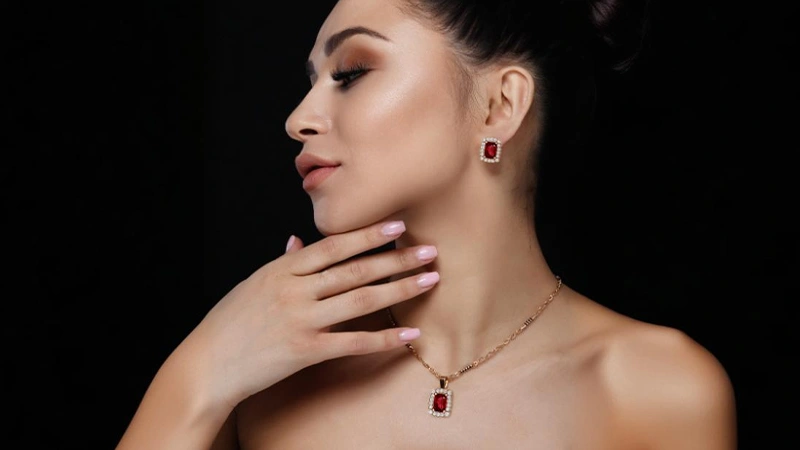
Characteristics of Ruby stones
1. Hardness
Natural rubies are very hard, durable and resistant to acids. Their hardness on the Mohs scale is 9, which makes them the second hardest substance on the earth, after diamonds.
This excellent toughness and almost zero cleavage (tendency to break when struck with something) makes them the best choice for jewelry.
2. Imperfections and Treatments
Several ruby stones have imperfections. Therefore, gemologists treat them to improve their color and clarity or enhance their overall quality. This includes heat treatment that improves color and removes inclusions.
Other than heat-treatment, experts use glass-filling, where they inject fractured rubies with glass, to hide the fractures and alter the color.
While these treatments are widely accepted in the gemstone industry, disclosure of treatment is necessary for transparency and consumer confidence.
3. Rarity & Price of Ruby Stones
Ruby is one of the rarest gemstones and this rarity defines its value. Exceptional-quality ruby stones with hardly any inclusions, command premium prices.
‘Blood red’ or ‘pigeon blood’ rubies are some of the most valuable, as their vibrant color is considered the most desirable.
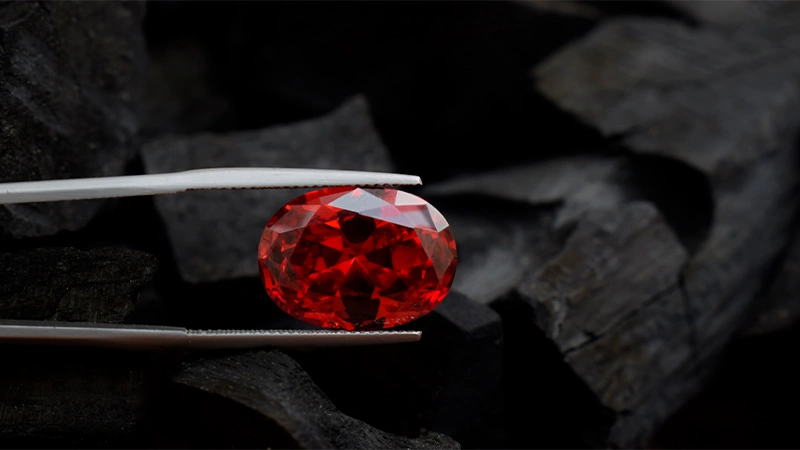
Final Insights
Having proper understanding about ruby stones is important for anyone who wants to purchase or invest in these attractive gemstones. By getting ideas about such interesting history, treatment, 4Cs, natural and fake rubies, you can make informed decisions.
Whether you wear a ruby as a jewelry or cherish it as a collector’s item, you are carrying a spark of the earth’s eternal flame.
If you are looking for ruby jewelry online, then look no further than GemsNY. Here we provide a fantastic collection with exceptional quality and authenticity. Check GemsNY reviews on the internet to have that extra bit of confidence before making a purchase.

